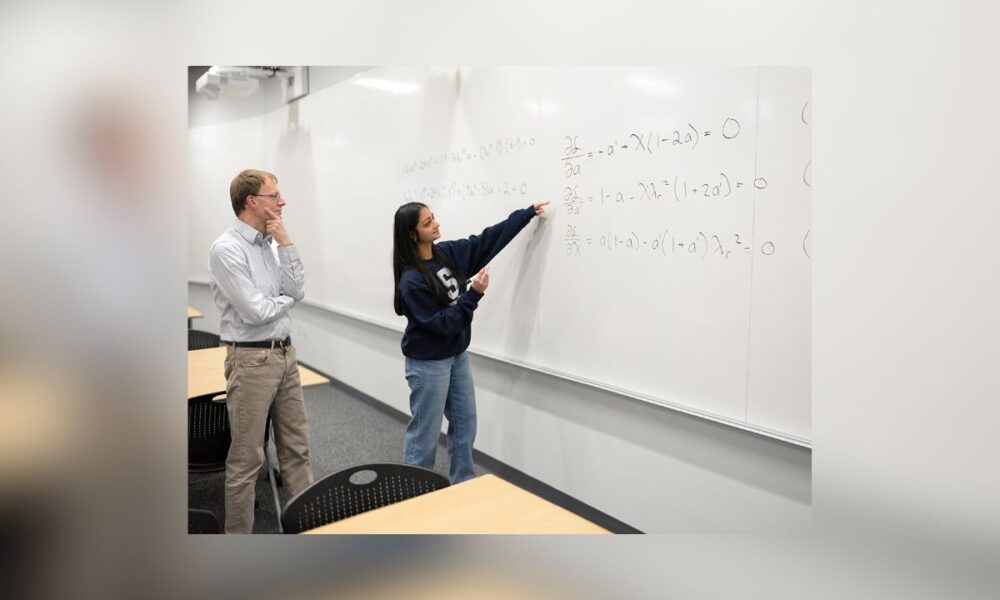A Penn State engineering student has cracked a 100-year-old aerodynamic puzzle, offering a refined approach that could transform wind turbine design.
Divya Tyagi, an undergraduate at the Schreyer Honors College, developed a solution that addresses gaps in a 1935 model by British aerodynamicist Hermann Glauert, providing engineers with a more robust tool for renewable energy innovation.
Glauert’s original work established a theoretical limit for wind turbine power output but overlooked key forces, such as wind pressure and blade bending, that turbines encounter daily. Tyagi’s research, rooted in calculus of variations, fills these gaps by calculating precise values for thrust and bending moment across various tip speed ratios — critical for modern turbine performance.
“I created an addendum to Glauert’s problem, which determines the optimal aerodynamic performance of a wind turbine by solving for the ideal flow conditions,” Tyagi said, per a Penn State news release.
Her thesis, published in Wind Energy Science, earned her the Anthony E. Wolk Award for the best aerospace engineering project at Penn State.
Professor Sven Schmitz, her adviser and co-author, highlighted the breakthrough’s scope.
“Glauert’s original work focused only on the power coefficient. But turbines also have to survive physical loads, like wind pressure pushing against the blades,” he said, per The Brighter Side. “Tyagi’s method accounts for these forces and gives us a clearer picture of total aerodynamic performance.”
The simplicity of Tyagi’s approach, using calculus of variations to optimize complex interactions, could benefit both classrooms and industry.
“The real impact will be on the next generation of wind turbines using the new knowledge that has been unveiled,” Schmitz added, according to Penn State. “As for Divya’s elegant solution, I think it will find its way into classrooms across the country and around the world.”
Tyagi noted the practical payoff: “Improving the power coefficient of a large wind turbine by just 1% has significant impacts on the energy production of a turbine. … A 1% improvement in power coefficient could notably increase a turbine’s energy output, potentially powering an entire neighborhood.”
Her work also enhances turbine durability, potentially reducing costs with lighter, longer-lasting designs.
Now pursuing a master’s degree, Tyagi is tackling airflow around helicopter rotors for the U.S. Navy, using computational fluid dynamics to improve flight safety.
Reflecting on her undergraduate effort, she said, “I would spend about 10 to 15 hours a week between the problem, writing the thesis, and on research. It took a long time because it was so math-intensive. But I feel really proud now, seeing all the work I’ve done.”
Schmitz, who had challenged four students with the problem over decades, credited Tyagi’s persistence.
“There had to be an easier way to do it. That’s when Divya came in. She was the fourth student I challenged with looking at it, and she was the only one who took it on. Her work is truly impressive.”
Her contribution could reshape wind energy as the industry seeks more efficient and resilient turbines.


